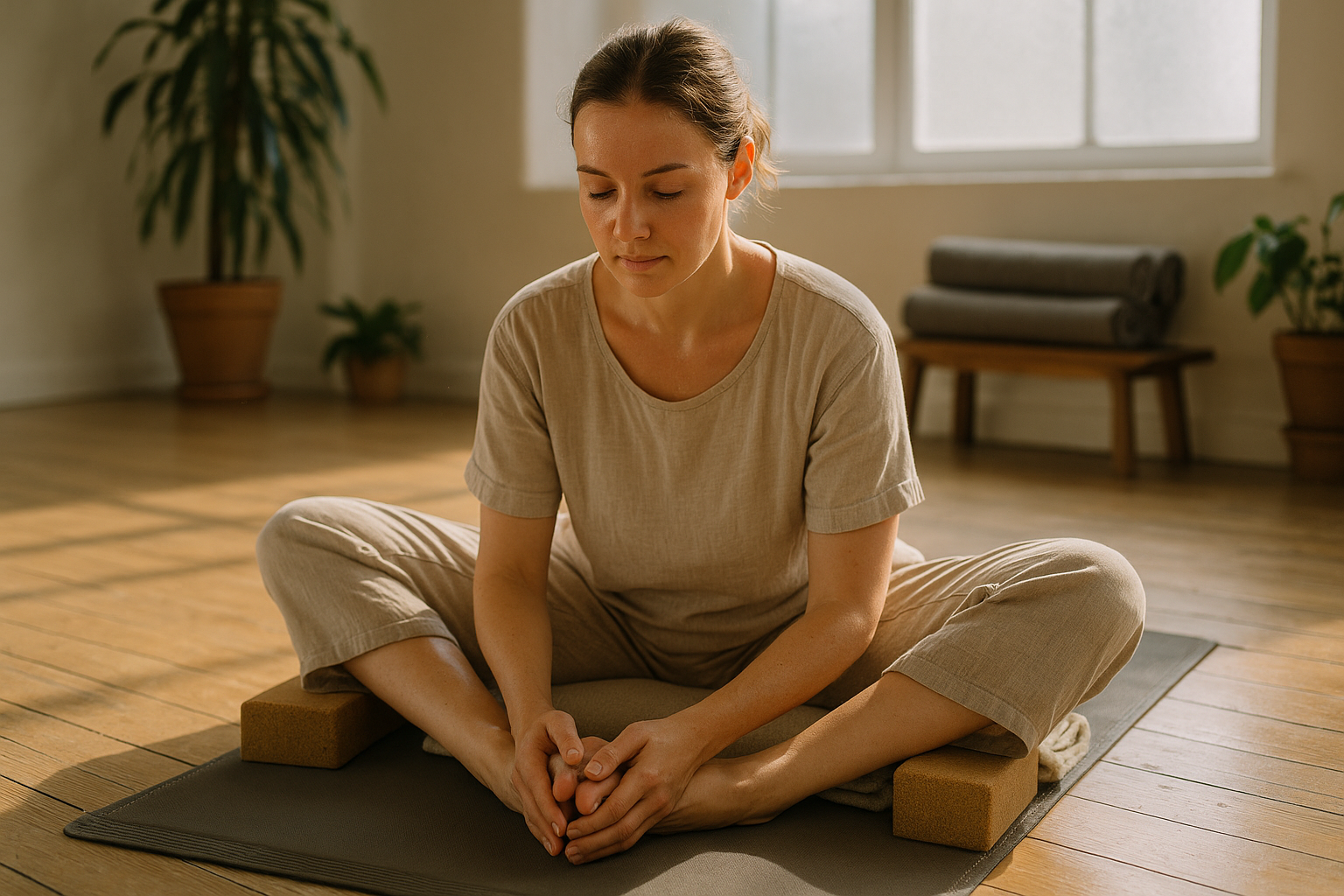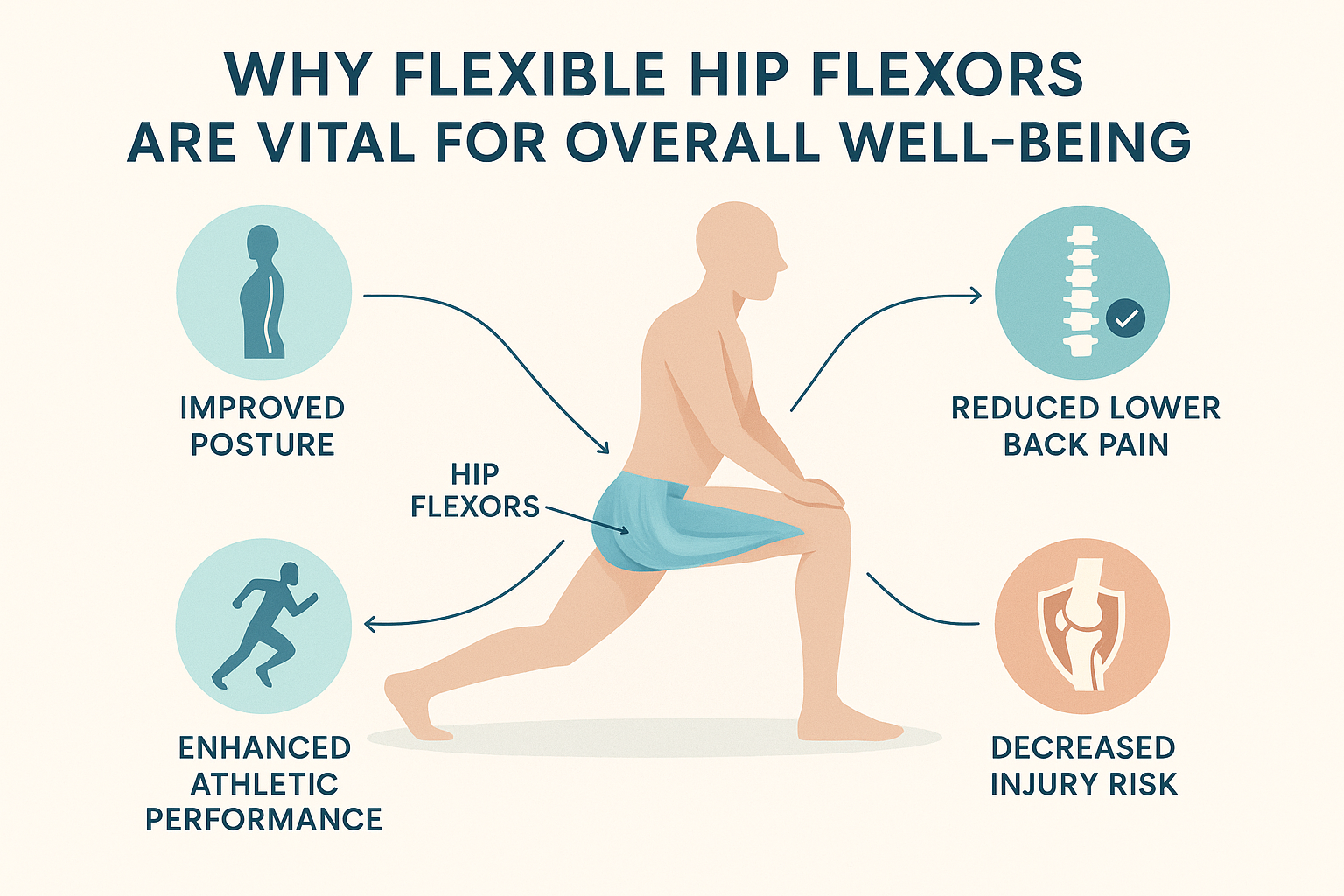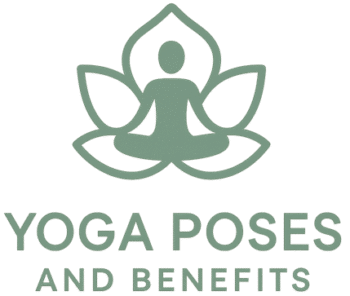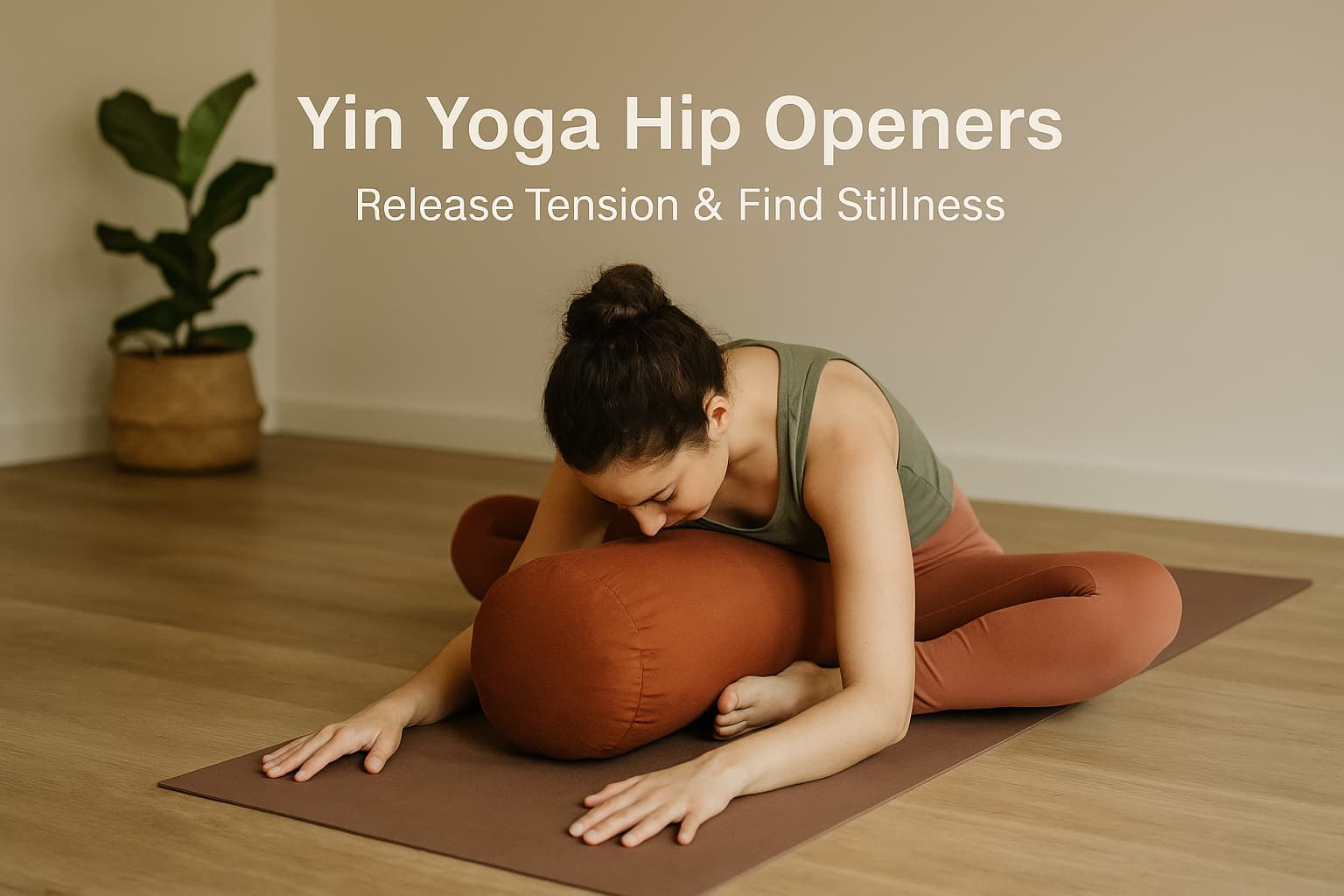Discover the transformative power of Yin Yoga hip openers with our thoughtfully curated yoga sequence designed specifically for hip flexors. Perfect for deepening flexibility and promoting relaxation, these best Yin Yoga poses target tight hips, releasing tension while cultivating mindful stillness. Whether you’re a beginner or an advanced yogi, this gentle practice offers effective stretches to improve range of motion and nurture your body. Embrace the calming benefits of Yin Yoga hip openers and experience a restorative approach to flexibility, making your hips feel lighter, looser, and more balanced. Start your journey toward relaxed, supple hips today!
Yin yoga hip openers offer a gentle yet powerful approach to improving hip flexibility and relieving deep-seated tension by targeting connective tissues through long-held, mindful poses. These practices help counteract the effects of modern sedentary lifestyles, address tight hip flexors, and support better posture, mobility, and emotional well-being. With downloadable sequences, guidance on creating personalized routines, and tips for safe alignment and breathwork, incorporating yin yoga hip openers into your practice can lead to lasting relaxation and enhanced overall health. Consistency transforms both the body and mind, making this practice a valuable part of self-care.
Key Highlights
- Yin yoga hip openers increase hip flexibility and relaxation by targeting deep connective tissues with long-held, gentle poses focused on the hip flexors.
- Consistent yoga practice helps relieve tight hip flexors, eases tension from prolonged sitting, and supports better posture, alignment, and daily mobility.
- Flexible hip flexors are essential for movement, lower back health, and overall well-being, reducing risk of discomfort, injury, and postural imbalances.
- Downloadable yin yoga hip opener sequences with step-by-step guidance and practice tips make building a personalized home routine simple and effective.
- Starting with mindful warm-ups, using props, and journaling progress empowers practitioners to safely deepen flexibility and maximize relaxation with every session.
The Benefits of Yin Yoga for Hip Flexibility and Relaxation
Corpse Pose (10-15 breaths) is the perfect way to start your yoga practice focused on flexibility and relaxation. In Corpse Pose, all the muscles unwind, letting your mind and body truly relax. For extra comfort, place a pillow or bolster under your knees, which creates space and eases any lower back pressure. As you lie down, let your feet fall open, arms by your side, palms up, and close your eyes. With every deep, diaphragmatic breath, you begin to release tension from the psoas, one of the primary hip flexors. The deep breath encourages your belly to expand and contract, enhancing both flexibility and relaxation with each inhale and exhale.
Pelvic Tilts (6-8 reps) further build flexibility in the lower back and pelvis. Start in a constructive rest position with your knees bent and feet flat. Rest your hands on your hips, inhale deeply, and as you exhale, gently press your lower back into the mat, tilting your pelvis backward. With your inhale, return to a neutral spine. This simple movement is surprisingly effective at warming up the core and increasing flexibility, all while promoting relaxation through mindful breathwork.
Wind-Relieving Pose (10-15 breaths per side) targets tension in the lower back, hips, and abdomen. Hug one knee into your chest, letting the other leg relax straight on the mat. Use your breath to ease muscular tightness, and extend your exhalations to amplify relaxation. This pose is especially helpful if you have digestive discomfort.
Dragon (10-15 breaths per side) is a deep opener for the hip flexors. Step one foot forward and slide the other leg back, dropping into this stretch to target flexibility through the hips and quads. Use blocks under your hands if you need extra support, and deepen the stretch as your flexibility allows.
Continue with High Flying Swan, Half Saddle, and Tadpole to fully round out your yin yoga hip opener sequence. Each pose emphasizes flexibility, melting away tension and helping you transition back into your day feeling centered and relaxed. Don’t forget to focus on your breath throughout every movement, this will maximize both flexibility and relaxation as you practice yoga for open, healthy hips.

Understanding How Yin Yoga Targets Deep Connective Tissues
To truly appreciate the effectiveness of Yin yoga hip openers for flexibility and relaxation, it’s essential to understand how Yin yoga targets the deep connective tissues within our bodies. Unlike more dynamic and physically demanding styles of yoga that focus on building heat in the muscle and increasing heart rate, Yin yoga is a slower, more meditative practice that emphasizes long-held postures and mindful stillness. In each pose, you relax the muscle as much as possible, allowing your weight and gravity to gently stretch and stress the deeper connective tissues surrounding the hips, pelvis, and lower spine. This unique approach makes Yin yoga especially powerful for unlocking stubborn tension and promoting greater range of motion in areas often resistant to conventional stretching methods. By accessing fascia, ligaments, and even joint capsules, Yin yoga encourages these tissues to gradually lengthen and become more supple, which supports overall hip flexibility and releases deeply held tension. Many people who practice yoga discover that even if they’re flexible in more active styles, their hips still feel tight due to adhesions or restrictions in the connective tissue rather than the muscle itself. Yin yoga poses are designed to be held for three to five minutes or longer, creating sustained pressure that prompts gentle remolding of these tissues through a process called ‘creep.’ This means that with consistent practice, yin yoga doesn’t just help you stretch, it actually helps reshape the underlying web of fascia for more lasting results. Additionally, because the physical effort is less intense, you can focus deeply on breath, relaxation, and the subtle sensations that arise, which helps cultivate a mindful connection with your body. Over time, yoga practitioners notice improvements not only in flexibility and comfort but also in their emotional and energetic well-being. For anyone seeking a holistic path to healthier hips and a more balanced mind-body experience, understanding how Yin yoga works on connective tissues, not just muscle, is a game-changer for deeper healing and transformation.
The Role of Hip Openers in Yoga Practice
Hip openers are a cornerstone of yoga practice, helping release deep-seated tension in the pelvis and lower back. Whether you’re a beginner exploring yoga hip stretches or an experienced practitioner, these poses offer profound physical and emotional benefits.
The hips are a complex web of muscles, ligaments, and connective tissue. When tight, they can cause discomfort, limit mobility, and even store stress. Yin yoga excels at addressing these areas through long-held, gentle postures that allow the connective tissues to release and lengthen.
- Flexibility & Mobility – Long holds in poses like Butterfly, Dragon, Shoelace, Square, and Sleeping Swan improve hip flexibility and joint range of motion.
- Stress Relief – Many people hold tension and emotional residue in the hips; yin yoga creates space for release and balance.
- Posture & Alignment – Regular practice improves seated and standing alignment, supporting daily movement and other yoga styles.
- Circulation & Relaxation – Deep stretches increase blood flow, calm the nervous system, and encourage relaxation.
- Emotional Shift – Mindful breathing during each hip opener often leads to subtle but powerful emotional release.
Integrating Hip Openers Into Your Practice
- Repeat sequences consistently to build resilience, ease in movement, and long-term well-being.
- Dedicate time in your yin yoga flow to hip-focused sequences.
- Hold each posture for 3–5 minutes, using props like bolsters or blocks to support comfort.
- Focus on slow, steady breathing to deepen both physical and emotional release.
Why Flexible Hip Flexors Matter for Overall Well-Being
When it comes to overall well-being, the importance of flexible hip flexors can’t be overstated. Whether you’re dedicated to your yoga practice or simply want to move more freely throughout daily life, supple hip flexors play a vital role in supporting both flexibility and muscle balance. The hip flexors are a group of muscles that enable forward bending, walking, running, and countless everyday movements. They act as a bridge between the upper and lower body, stabilizing your core and supporting a healthy posture. Unfortunately, modern lifestyles often involve long hours sitting at desks or in cars, which can lead to tightness and imbalance in this crucial area. Over time, this lack of flexibility doesn’t just restrict movement; it can contribute to discomfort, pain, and limitations that affect everything from athletic performance to emotional well-being. Engaging in regular yoga that focuses on hip openers is a powerful way to counteract these negative effects. Unlike dynamic workouts that mainly target surface-level muscle groups, yin yoga emphasizes holding poses for longer periods, allowing deep release in the connective tissues and enabling lasting improvements in flexibility. With consistent practice, you’ll notice that your body feels more open and relaxed, muscular tension gradually eases, and your range of motion expands. These physical shifts also extend to your mental and emotional state, flexible hip flexors are linked to enhanced relaxation, reduced stress, and even improved creativity. Furthermore, strong and flexible hip muscles support the spine and lower back, reducing the risk of injury and helping to maintain alignment. By prioritizing yoga sequences that target the hips, you’re not only addressing physical stiffness but nurturing a holistic sense of vitality. Whether you’re a beginner or an experienced yogi, understanding why hip flexor flexibility matters empowers you to make positive changes that ripple through your entire well-being. Through consistent yoga focused on these muscle groups, lasting benefits, both seen and felt, can become a defining part of your everyday life.

Anatomy and Function of the Hip Flexors
The anatomy and function of the hip flexors play a crucial role in every yoga practice, especially in yoga sequences dedicated to flexibility and relaxation. The hip flexors are a group of muscles located at the front of the hip that enable us to lift our knees toward our chest and bend forward at the waist. The group primarily includes the iliopsoas, which is composed of the psoas major and the iliacus muscle, as well as other important muscles like the rectus femoris, sartorius, and tensor fasciae latae. These muscles work together to stabilize the pelvis and lower back, supporting a wide range of everyday movements and athletic activities. Modern lifestyles, which often involve prolonged periods of sitting, can lead to hip flexor tightness, impacting posture and causing discomfort or even lower back pain. Yin yoga aims to gently release tension within these deep muscles by encouraging long, passive stretches that target the fascia and other connective tissues. When you practice hip opener poses in yoga, you’re not just improving flexibility but also relieving muscular imbalances that can restrict movement and decrease comfort. By understanding the anatomy of the hip flexors, you gain better appreciation for how thoughtful yoga sequencing can restore freedom of motion and prevent strain. In a typical yoga hip opener session, attention is paid to moving safely and mindfully to avoid overextending these powerful muscles. The mindful pace of yin yoga provides a nurturing environment for the body, allowing the hip flexors to lengthen gradually, which encourages improved joint mobility and enhanced relaxation. Consistent practice results in a more balanced pelvic alignment and helps prevent common issues arising from tight or overused hip muscles. When you bring awareness to these key muscles through yoga, you’re taking proactive steps toward a healthier, more mobile body and supporting your overall sense of well-being. Appreciating the anatomy and function of your hip flexors transforms your yoga journey into one of self-care and healing.
Common Causes and Effects of Tight Hip Flexors
Tight hip flexors are a common issue that affects people of all ages due to a variety of lifestyle habits and movement patterns. One of the main causes of tightness in this muscle group is prolonged sitting, which is prevalent in both office jobs and home environments. When you remain seated for long periods, your hip flexors get shortened and become less flexible, leading to discomfort and restricted mobility. Lack of regular movement, especially stretching or yoga, can further exacerbate this issue. Engaging in activities that predominantly involve forward motion, such as cycling or running, can also result in overworked hip flexor muscles, causing them to become tight or even painful over time. Poor posture, particularly slouching, places excessive strain on the hip area, compounding the problem.
The effects of tight hip flexors can manifest in both the pelvis and the lower back, often resulting in a feeling of stiffness or aching. When these muscle groups are tight, they can contribute to an anterior pelvic tilt, which in turn can create misalignment throughout the spine and increase the risk of chronic lower back pain. Restricted hip mobility also impedes overall movement efficiency and may limit your ability to participate in activities that require bending or deep squatting. This muscle tightness can negatively impact athletic performance, daily function, and even sleep quality, as discomfort in the hips and lower back can persist throughout the night.
Fortunately, consistent practice of yoga focused on hip openers can address these challenges by gradually lengthening the hip flexors and restoring their natural range of motion. Yin yoga in particular targets the connective tissues deep within the muscles, encouraging a gentle release of tension. Through mindful and sustained stretching, you can effectively counteract the damage caused by modern sedentary lifestyles and build a healthier, more balanced body. Adding hip-opening yoga poses to your practice can make a significant difference in alleviating tightness, promoting flexibility, and enhancing relaxation.
Step-by-Step Guidance for Deepening Each Yoga Pose
Deepening your practice of yin yoga hip openers begins with clear, step-by-step guidance designed to help you safely ease into each pose, enhancing your flexibility and overall relaxation. When you approach each yoga posture mindfully, you’ll discover how subtle shifts can encourage your muscles and connective tissues to release tension, especially around the hip flexors. It’s important to enter each yoga pose slowly, using props such as blocks, bolsters, or folded blankets to support your unique body shape and needs. As you settle in, focus on maintaining a calm and steady breath, allowing every exhale to guide your body deeper into relaxation. Yin yoga isn’t about pushing to your edge, it’s about cultivating patience and awareness, honoring the limitations and capabilities of your own body. Hold each posture for several minutes, noticing how sensations change over time and resisting the urge to force yourself further than feels comfortable. Pay close attention to the alignment of your pelvis and spine in poses like Dragon, Shoelace, or Butterfly, to protect your joints while encouraging open hips.
Listen to the signals your body sends and adjust your position as needed, this safe approach is what makes yin yoga a powerful tool for both physical and mental transformation. Remember, every body is different. With consistent yoga practice and perseverance, you’ll gradually experience increased range of motion and deeper relaxation. Maintain mental focus by setting an intention for your yoga session, whether it’s to foster flexibility, release stored emotions, or simply unwind after a long day. By following these step-by-step instructions, you’ll maximize the benefits of every yoga session while reducing your risk of injury. Take your time, be mindful, and approach each pose with a spirit of self-compassion. As you progress, you may notice that your hips feel more open, your flexibility improves, and your sense of well-being expands in and out of the yoga studio. Embrace the journey, each breath, hold, and gentle adjustment brings you closer to your goals, one yoga pose at a time.
Checklist for Creating Your Personalized Home Practice
Creating your personalized home yoga practice is a transformative way to bring the benefits of yoga directly into your daily routine, enhancing both flexibility and relaxation. To get started with yin yoga hip openers, you’ll want to design a practice that’s tailored to your unique goals and needs. Begin by setting a clear intention for your yoga session , are you looking for deep release, improved hip flexibility, or simply more relaxation? Having an intention allows every yoga session to be meaningful and helps you stay motivated. Next, choose a quiet, uncluttered space where you can roll out your mat and feel comfortable spending time on the floor. This environment should encourage you to relax and focus inward as you settle into longer holds, which are a vital aspect of yin yoga practices. Then, gather any props you may need for support, such as yoga blocks, bolsters, or folded blankets. These props can help you modify poses and maintain correct alignment, making your yoga practice safer and more enjoyable. When selecting poses for your sequence, consider incorporating a mix of well-known yin yoga hip openers such as Butterfly Pose, Dragon Pose, and Sleeping Swan, as these target the deep hip flexors while encouraging a profound sense of release. Remember to arrange your sequence so you start with gentle warm-ups and gradually progress to deeper stretches, always listening to your body’s signals and never forcing a stretch. Track your progress by keeping a yoga journal or checklist, noting which yoga poses feel best and where you notice increased flexibility or comfort. Over time, you’ll discover which hip openers best suit your body, allowing you to refine your personalized sequence for optimum benefit. Finally, close each practice with a gentle savasana or mindfulness meditation, giving your body and mind time to absorb the session’s benefits. A personalized home yoga practice empowers you to nurture greater hip flexibility and relaxation, making yoga an essential and rewarding part of your self-care routine. Let yoga become your daily ritual for transformation and renewal, all from the comfort of home.
Integrating Yin yoga hip openers into your routine can dramatically improve flexibility, release tension, and enhance overall relaxation. Prioritizing these gentle yoga poses allows the hip flexors to lengthen and heal, supporting greater mobility and comfort. Whether you follow this targeted yoga sequence for hip flexors daily or a few times per week, consistency is key to seeing lasting results. Embrace the mindful pace and deep stretches of Yin yoga to nurture both your body and mind, unlocking a deeper sense of ease and well-being with every practice. Start your journey to flexible, relaxed hips today!

